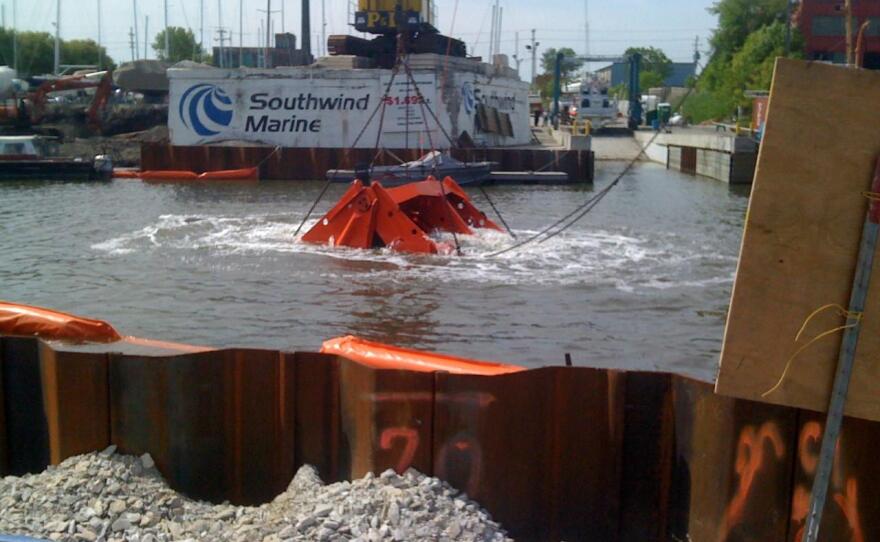Over the last seven years, the Great Lakes Restoration Initiative has pumped $2.2 billion into restoring the Great Lakes - thousands of projects both large and small. President Trump would like to eliminate the fund by 2018.
READ: Trump's Budget Eliminates Great Lakes Restoration Initiative Funding

According to the Great Lakes Commission, the initiative has infused $331 million into 416 projects in Wisconsin through fiscal year 2016.
Milwaukee Riverkeeper's Cheryl Nenn has worked on some of those projects. Take Lincoln Creek, for example.
Great Lakes Restoration Initiative, or GLRI, dollars were put to work where the creek flows into the Milwaukee River. Heaps of industrial chemicals were removed. Nenn says the containments were remnants of a time when people could dump pretty much anything into rivers.
“We removed about 180,000 cubic yards of contaminated sediments,” she says.
The Milwaukee River is part of a massive basin that also holds the Menomonee and Kinnickinnic Rivers. Nenn says they too have benefited from GLRI clean up funds.
“It’s allowed for improved boating, improved recreation and also a massive improvement in water quality,” she says.
Her group monitors the basin and anticipates more cleanups, but now Nenn wonders how projects will come to life without GLRI covering part of the cost.
“We’re also concerned about base budget cuts from other federal agencies, like EPA, like US Fish and Wildlife Service, NOAA. We use a lot of them for technical advice and services as well,” Nenn adds, “You know, 40 percent of money that’s going to Asian carp efforts right now are from the GLRI.”

There’s no hiding Dave Fowler’s concern. He recently retired, but worked for many years as a project manager with the Milwaukee Metropolitan Sewerage District.
He calls a recent GLRI project along the Menomonee River next to Wauwatosa’s Hoyt Park a little gem.

“We had large cranes and backhoes into the stream itself. There were five barriers going down stream. They came in and broke up the concrete. We had a design team that looked at this and put in the right kind of rock to allow for fish passage,” Fowler says.
He says GLRI dollars have infused projects with expertise and more funding. “You get this fabulous cooperation between multiple federal agencies that come together to help fund small projects like this and bigger projects. [With] the Great Lakes Restoration Initiative, there’s funding available, which then gets other partners to step up to the plate."
Atwater Beach in Shorewood is one of the sites Sandra McLellen has sampled after big storms for the UWM School of Freshwater Sciences.
McLellan’s research helped pinpoint where to place native plants and rain gardens to slow and clean the flow of polluted storm water, before it reaches Lake Michigan.

“The GLRI has allowed this community to identify sources of runoff, do some fixes to minimize those. So think how many small communities are like that around the entire Great Lakes, which are a couple thousand miles of shoreline, to allow them to fix things that would otherwise go un-addressed,” McLellan says.
Beyond the fate of the GLRI, McLellan says she and her colleagues could face a range of grant cuts from multiple federal agencies. Cutting edge research is threatened, but her concerns run deeper.
“These research grants are really the training ground for the people who are going to answer the even more pressing questions that we’re going to see 10 years from now.” McLellan continues, “So if we’re not training those people, what are we going to see 10, 15 or 20 years from now, in terms of being able to understand the system or deal with some of these issues?”
McLellan and her fellow advocates have reason to hope GLRI might survive. This week, 63 bipartisan members of Congress sent a letter to the House Appropriations Committee urging continuation of funding.








